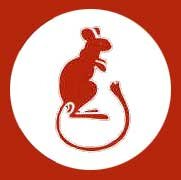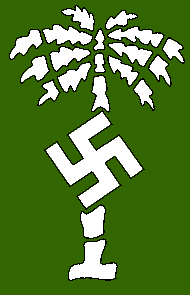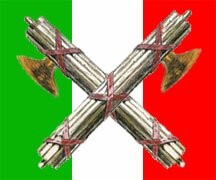Commandos
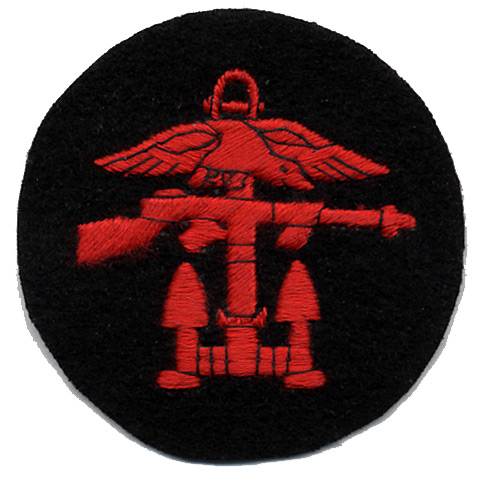
Independent companies were formed within the British Army 1940 for the expressed purpose raiding German held territories. The companies were formed into battalion sized units called Commandos, a name revived by Winston Churchill. The name was originally used by the Dutch for their raiding parties during the Boer War. Churchill was so impressed by these dutch Raiders, that he chose the name Commando for his raiding force. Commandos were highly trained light infantry designed to operate independently.
Their two principle missions were intelligence gathering and raiding. They were not meant to hold ground longer that 36 hours. Most of their operations were amphibious in nature. While initially the Commandos were drawn from the Army, the Royal Navy also The Royal Navy Beach Parties later took on duties similar to the Commandos. Eventually Royal Marine Commando units were also raised. After WWII the army commandos disbanded but the Royal Marine Commandos remained active.
ILRS, Indian Long Range Squadron
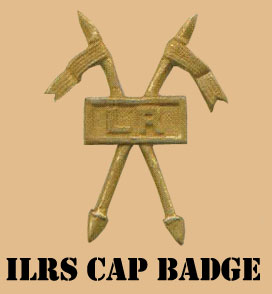
There is a misconception that the ILRS was part of the LRDG. The ILRS was trained by the LRDG and performed some missions with the LRDG but the units was raised for a specific mission that was different than the LRDG. Therefore it should be considered a seperate and distinct unit that was attached to the LRDG for training and for a few missions.
The ILRS was formed from volunteers pulled from the 3rd Motor Brigade, 31st Indian Armooured Division. The 3rd Motor Brigade comprised the 2nd Royal Lancers, 11th Cavalry and 18th Lancers. While all of the units were suppose to be Recce regiments equipped with armoured cars or light tanks, when deployed to North Africa they were given 15 CWT trucks instead, The 3rd Motor Brigade fought with distinction during the first battle of Tobruk.
The ILRS comprised 4 patrols Jat (J) Punjabi (P) Rajput (R) and Sikh (S). While two patrols, (J & R) were attached to the LRDG and saw action in the Western Desert, the ILRS it was initially raised for operations in Persia and Iraq in the event the Germans made it that far east.
Like the SAS, the ILRS normally used Jeeps.
While the ILRS never performed the mission it was created for, the unit was deployed to patrol the borders between the Soviet Union and Persia and Afghanistan. Great Britain was very concerned with Soviet intrusion into these countries and saw this as a means to prevent it.
Below are the commanders for the four ILRS patrols.
- Indian 1 (Jat): Lt. James Edward Cantlay
- Indian 2 (Punjabi): Capt. Travers John Durrant Birdwood (some sources show Durrant spelled Durrand)
- Indian 3 (Rajat): Capt. Alan Browning Rand
- Indian 4 (Sikh): Lt. Gilbert William. Nangle
ILRS is said to have used standard tactical markings. The two known marking were a red triangle and a yellow circle. This according to Jenner/List book, which says these were used for one Indian 1 and 2. Other sources I've seen show the triangle or angle for "A", square or box for "B", circle for "C" and diamond for "D". It is pure speculation on my part if these other shapes were used and/or what color they would have been. Serious research is required to veirfy the hunch.
Layforce
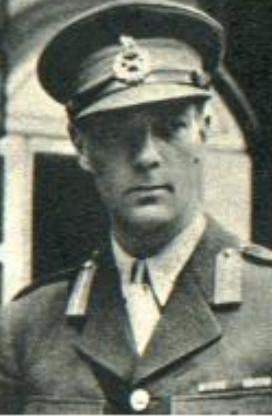
Robert Laycock, DSO
Layforce was a light military force consisting of three Special Service Battalions raised in the United Kingdom and a forth battalion raised in the Middle East. Each Battalion was commanded by a major. Each Battalion has two companies with five troops each. The troops were were comprised fifty men,officers and other ranks combined. The force was commanded by Colonel Robert Laycock. The men of Layforce were drawn from Nos, 3,4,7, 8 and 11 Commando and also 50 and 52 (Middle East) Commando.
Their first raid, by elements of the force, was made on April 20 on the port of Bardia. The raid forced Rommel to pull a front line brigade because he thought the entire 6th division was being landed behind his front line. Parts of Layforce then was involved with the evacuation of Crete and the defense of Cyprus. Later, Layforce was deployed for actions in Lebanon and Syria. Layforce (and No.8 Commando) were disbanded on August 1, 1941 with many members of the unit later migrating to the SAS.
No 1 Demolition Squadron, PPA, (Popski's Private Army)
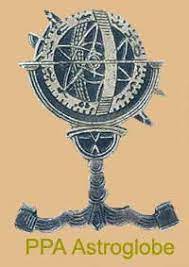
Formed in Cairo in 1942 by Major (later Lieutenant-Colonel) Vladimir Peniakoff DSO MC, The PPA was probably one of the more Special forces units to serve in the British Army. Peniakoff got his nickname from William Kennedy Shaw, because signalers had difficulties pronouncing his name.
The PPA was primary mission was to attack Rommel's fuel supplies. Unlike the LRDG, the PPA was more likely to act upon intelligence rather than gather it. The PPA normally performed acts of sabotage than actual direct action. After the Desert War ended, Popski continued to operate primarily in Italy. PPA was disbanded on 14 September 1945. While Peniakoff served with the British his parents were Russians and he was born in Belgium. He did not become British citizen until 1946.
SAS, Special Air Service
The SAS was the brain child of Lieutenant Archibald David Stirling, Initially the unit was known as 'L' Detachment, SAS Brigade, (so named from August 24, 1941) Stirling often credited Jock Lewes and Paddy Blair Mayne as co-founders of the unit. Initially the unit was going to be a parachute unit, which would be dropped behind enemy lines, blow up airfields, and then rendezvous with the LRDG and be brought back to friendly lines.
After a dismal failure with the first air drop, Stirling discussed the idea of LRDG providing "taxi" service to and from enemy targets. The LRDG agreed but eventually this became an undue stress for the LRDG as they still had their other duties to do. Eventually the SAS acquired their own vehicles and were taught the necessary desert navigational skills by the LRDG. Unlike the LRDG, the SAS did little reconnaissance work and no surveying work, concentrating principally on destruction of enemy airfields.
At times, the SAS and the LRDG were at odds with each other. This was especially the case when the SAS conducted raids in areas where the LRDG were conducting road watches or other intelligence gathering missions. On more than one occasion, the LRDG had missions compromised and lives lost because the SAS performed a raid in an area off limits to direct action. For the most part, however, the units complimented each other.
After the Desert War ended, the SAS continued work in Italy and later Northern France, often performing duties as a motorized airborne/commando force. The unit was disbanded after the war but quickly reconstituted in 1947.
SBS Special Boat Service
The Special Boat Section was formed in 1941 from the Folbot Troop of HQ Layforce in the Middle East. it was sometimes known as '1 SBS'. By 1942 the personnel became D squadron of 1 Special Air Service Regiment and became the renamed Special Boat Squadron In 1943 a second Special Boat Section was raised in Britain for service with the Special Service Brigade as '2 SBS'. As a Commando formation personnel of 2 SBS wore the Commando green beret. However the Special Boat Squadron of 1 SAS became an independently operating squadron and was subsequently expanded to regimental status as the Special Boat Service but kept the SAS beret and cap badge.
The SBS conducted amphibious sabotage. Typically a two man team delivered via submarine would sneak into an enemy port using folboats and plant limpit mines on the sides of ships. After the mines were planted, they would hopefully row back out to the waiting submarine. The SBS became part of the Royal Marine Commandos after the war
SIG, Special Interrogation Group
The Special Interrogation Group (SIG) was a short-lived unit comprised German-speaking Jewish volunteers from the British Mandate of Palestine as well as displaced Jews from Europe, primarily Eastern Europe. The SIG performed commando and sabotage operations against Axis forces in the Western Desert Campaign during World War II.
SIG was the Brain-child of Herbert Cecil A. Buck, MC of the Punjabi Guards and Scots Guards. Buck was German linguist who at one time had been captured by the Germans and managed to escape back to Egypt by wearing a stolen uniform and speaking perfect German. With the inception of the unit, Buck became its commander.
Several members of SIG had been with 51 Commando, a Commando Regiment raised in the Middle East. Other recruits came from the Free Czech Forces, the French Foreign Legion and other German-speaking Jewish troops. The primary mission of SIG was to infiltrate German Lines and perform acts of sabotage. Because they often operated in German Uniforms, they were considered spies and knew that if captured they faced certain death and probably torture. They normally operated in about platoon sized units or smaller. Some SIG members were dropped off by the LRDG. Many SIG members were not trusted by the LRDG or other British units fearing if caught, they would crack under pressure or worse, they were double agents for the Nazis.
The unit was never very large, some beleive it may have never been more than a platoon. SIG took part on the ill fated raid on Tobruk, taking on the role of German guards for British POWs.
Captain Buck would eventually join the SAS, and was taken prisoner at Tobruk in 1942. He remained a POW until the end of the war. Shortly afterwards he died in a plane crash on 22 November 1945.

